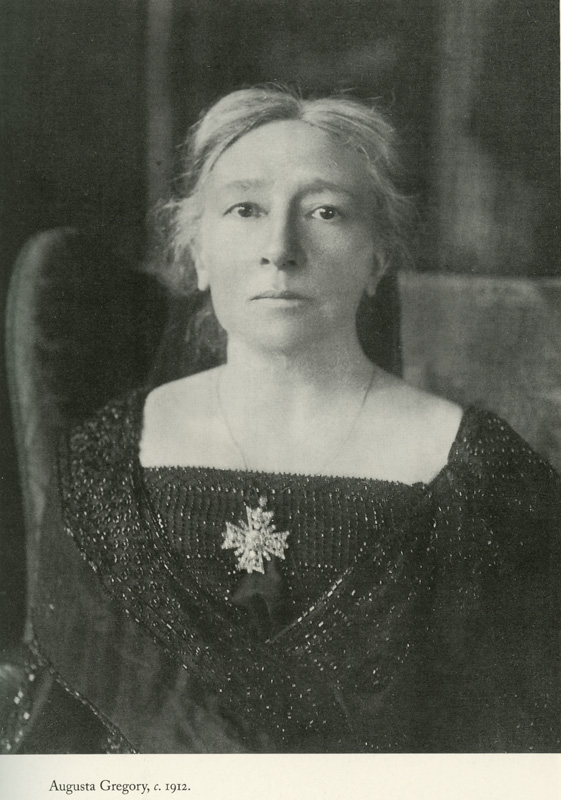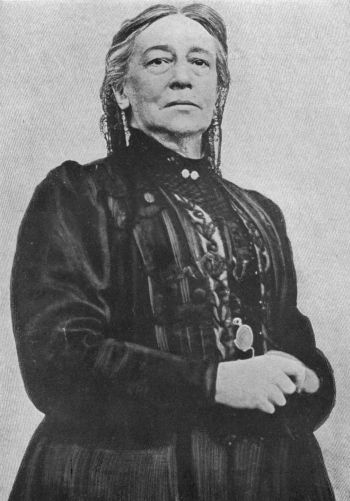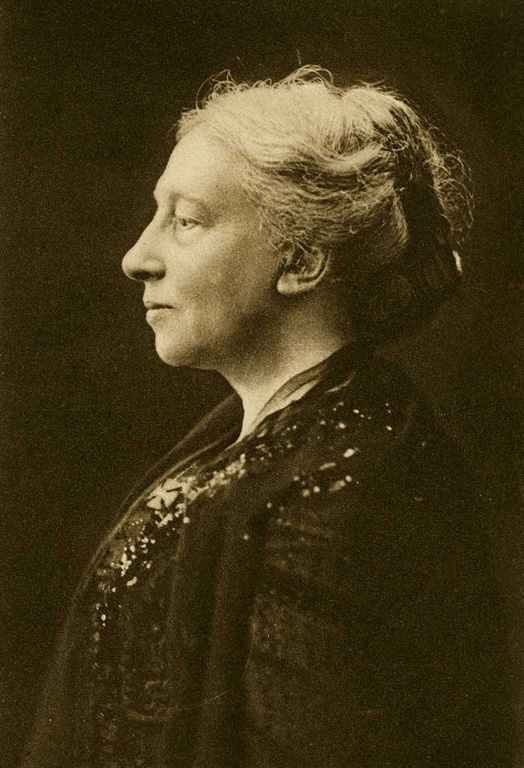<Back to Index>
- Chemist and Physicist Johann Josef Loschmidt, 1821
- Dramatist Isabella Augusta, Lady Gregory, 1852
- 3rd Emperor of the Qing Dynasty Shunzhi, 1638
PAGE SPONSOR



Isabella Augusta, Lady Gregory (15 March 1852 – 22 May 1932), born Isabella Augusta Persse, was an Irish dramatist and folklorist. With William Butler Yeats and Edward Martyn, she co-founded the Irish Literary Theatre and the Abbey Theatre, and wrote numerous short works for both companies. Lady Gregory produced a number of books of retellings of stories taken from Irish mythology. Born into a class that identified closely with British rule, her conversion to cultural nationalism, as evidenced by her writings, was emblematic of many of the political struggles to occur in Ireland during her lifetime.
Lady Gregory is mainly remembered for her work behind the Irish Literary Revival. Her home at Coole Park, County Galway, served as an important meeting place for leading Revival figures, and her early work as a member of the board of the Abbey was at least as important for the theatre's development as her creative writings. Lady Gregory's motto was taken from Aristotle: "To think like a wise man, but to express oneself like the common people."
Lady Gregory was born the youngest daughter of the Anglo - Irish landlord family Persse in Roxborough, County Galway. Her mother, Frances Barry, was related to Standish O'Grady, 1st Viscount Guillamore, and her family home, Roxborough, was a 6,000 acre (24 km²) estate, the big house of which was later burnt down during the Irish Civil War. She was educated at home, and her future career was strongly influenced by the family nurse (i.e. nanny), Mary Sheridan, a Catholic and a native Irish speaker, who introduced the young Isabella Augusta Persse to the history and legends of the local area.
She married Sir William Henry Gregory, a widower with an estate at Coole Park, near Gort, County Galway, on 4 March 1880, at St Matthias church in Dublin. As the wife of a knight, she became entitled to be called "Lady Gregory". Sir William, who was 35 years older than his bride, had just retired from his position of Governor of Ceylon (now Sri Lanka), having previously served several terms as Member of Parliament for Galway County. He was a well educated man with many literary and artistic interests, and the house at Coole Park housed a large library and extensive art collection, both of which his bride was eager to explore. He also had a house in London, and the couple spent a considerable amount of time there holding a weekly salon which was frequented by many of the leading literary and artistic figures of the day, including Robert Browning, Lord Tennyson, John Everett Millais and Henry James. Their only child, Robert Gregory, was born in 1881. He was killed while serving as a pilot during the First World War, an event that inspired Yeats's poems "An Irish Airman Foresees His Death," "In Memory of Major Robert Gregory," and "Shepherd and Goatherd."
The Gregorys travelled in Ceylon, India, Spain, Italy and Egypt. While in Egypt, Lady Gregory had an affair with the English poet Wilfrid Scawen Blunt, during which she wrote a series of love poems, A Woman's Sonnets.
Her earliest work to appear under her own name was Arabi and His Household (1882), a pamphlet — originally a letter to The Times — in support of Ahmed Orabi Pasha, leader of what has come to be known as the Urabi Revolt, an 1879 Egyptian nationalist revolt against the oppressive regime of the Khedive and European domination of Egypt. She later said of this booklet, "whatever political indignation or energy was born with me may have run its course in that Egyptian year and worn itself out". Despite this, in 1893 she published A Phantom's Pilgrimage, or Home Ruin, an anti - Nationalist pamphlet against William Ewart Gladstone's proposed second Home Rule Act.
She continued to write prose during the period of her marriage. During the winter of 1883, while her husband was in Ceylon, she worked on a series of memoirs of her childhood home with a view to publishing them under the title An Emigrant's Notebook, but this plan was abandoned. She wrote a series of pamphlets in 1887 called Over the River, in which she appealed for funds for the parish of St. Stephens in Southwark, south London. She also wrote a number of short stories in the years 1890 and 1891, although these also never appeared in print. A number of unpublished poems from this period have also survived. When Sir William Gregory died in March 1892, Lady Gregory went into mourning and returned to Coole Park where she edited her husband's autobiography, which she published in 1894. She was to write later, "If I had not married I should not have learned the quick enrichment of sentences that one gets in conversation; had I not been widowed I should not have found the detachment of mind, the leisure for observation necessary to give insight into character, to express and interpret it. Loneliness made me rich — 'full', as Bacon says."
A trip to Inisheer in the Aran Islands in 1893 reawoke an interest in the Irish language and in the folklore of the area in which she lived. She organised Irish lessons at the school at Coole and began collecting tales from the area around her home, especially from the residents of Gort workhouse. This activity led to the publication of a number of volumes of folk material, including A Book of Saints and Wonders (1906), The Kiltartan History Book (1909), and The Kiltartan Wonder Book (1910). She also produced a number of collections of "Kiltartanese" versions of Irish myths, including Cuchulain of Muirthemne (1902) and Gods and Fighting Men (1904). ("Kiltartanese" is Lady Gregory's term for English with Gaelic syntax, based on the dialect spoken in Kiltartan.) In his introduction to the former, Yeats wrote "I think this book is the best that has come out of Ireland in my time." James Joyce was to parody this claim in the Scylla and Charybdis chapter of his novel Ulysses.
Towards the end of 1894, encouraged by the positive reception of the editing of her husband's autobiography, Lady Gregory turned her attention to another editorial project. She decided to prepare selections from Sir William Gregory's grandfather's correspondence for publication as Mr Gregory’s Letter - Box 1813 – 30 (1898). This entailed researching Irish history of the period, and one outcome of this work was a shift in her own position from the 'soft' Unionism of her earlier writing on Home Rule to a definite support of Irish nationalism and Republicanism and what she was later to describe as "a dislike and distrust of England".
Edward Martyn was a neighbour of Lady Gregory, and it was during a visit to his Tullira Castle that she first met W.B. Yeats. Discussions between the three of them over the following year or so led to the founding of the Irish Literary Theatre in 1899. Lady Gregory undertook fundraising, and the first programme consisted of Martyn’s The Heather Field and Yeats's The Countess Cathleen. During this period, she effectively co-authored Yeats's early plays, including The Countess Cathleen, specifically working on the passages of dialogue involving peasant characters.
The Irish Literary Theatre project lasted until 1901, when it collapsed due to lack of funding. In 1904, Lady Gregory, Martyn, Yeats, John Millington Synge, Æ, Annie Horniman and William and Frank Fay came together to form the Irish National Theatre Society. The first performances staged by the society took place in a building called the Molesworth Hall. When the Hibernian Theatre of Varieties in Lower Abbey Street and an adjacent building in Marlborough Street became available, Horniman and William Fay agreed to their purchase and refitting to meet the needs of the society.
On 11 May 1904, the society formally accepted Horniman's offer of the use of the building. As Horniman was not normally resident in Ireland, the Royal Letters Patent required were paid for by her but granted in the name of Lady Gregory. One of her own plays, Spreading the News was performed on the opening night, 27 December 1904. At the opening of Synge's The Playboy of the Western World in January 1907, a significant portion of the crowd rioted, causing the remainder of the performances to be acted out in dumbshow. Lady Gregory did not think as highly of the play as Yeats did, but she defended Synge as a matter of principle. Her view of the affair is summed up in a letter to Yeats where she wrote of the riots: "It is the old battle, between those who use a toothbrush and those who don't."
Lady Gregory remained an active director of the theatre until ill health led to her retirement in 1928. During this time she wrote more than 19 plays, mainly for production at the Abbey. Many of these were written in an attempted transliteration of the Hiberno - English dialect spoken around Coole Park that became widely known as Kiltartanese, from the nearby village of Kiltartan. Her plays had been among the most successful at the Abbey in the earlier years, but their popularity declined. Indeed, the Irish writer Oliver St John Gogarty once wrote "the perpetual presentation of her plays nearly ruined the Abbey". In addition to her plays, she wrote a two - volume study of the folklore of her native area called Visions and Beliefs in the West of Ireland in 1920. She also played the lead role in three performances of Cathleen Ni Houlihan in 1919.
During
her time on the board of the Abbey, Coole Park remained her home and
she spent her time in Dublin staying in a number of hotels. At the time
of the 1911 national census for example, she was staying in a hotel at
16 South Frederick Sreet. In
these, she ate frugally, often on food she brought with her from home.
She frequently used her hotel rooms to interview would-be Abbey
dramatists and to entertain the company after opening nights of new
plays. She spent many of her days working on her translations in the National Library of Ireland. She gained a reputation as being a somewhat conservative figure. For instance, when Denis Johnston submitted his first play Shadowdance to the Abbey, it was rejected by Lady Gregory and returned to the author with "The Old Lady says No" written on the title page. Johnson decided to rename the play, and The Old Lady Says 'No' was eventually staged by the Gate Theatre in 1928. When
she retired from the Abbey board, Lady Gregory returned to live in
Galway, although she continued to visit Dublin regularly. The house and demesne at Coole Park had been sold to the Irish Forestry Commission in 1927, with Lady Gregory retaining life tenancy. Her
Galway home had long been a focal point for the writers associated with
the Irish Literary Revival and this continued after her retirement. On
a tree in what were the grounds of the now demolished house, one can
still see the carved initials of Synge, Æ, Yeats and his artist
brother Jack, George Moore, Sean O'Casey, George Bernard Shaw, Katharine Tynan and Violet Martin. Yeats wrote five poems about or set in the house and grounds: "The Wild
Swans at Coole", "I walked among the seven woods of Coole", "In the
Seven Woods", "Coole Park, 1929" and "Coole Park and Ballylee, 1931". The woman Shaw once described as "the greatest living Irishwoman" died at home aged 80 from breast cancer, and is buried in the New Cemetery in Bohermore, County Galway. The entire contents of Coole Park were auctioned three months after her death and the house demolished in 1941. Her plays fell out of favour after her death and are now rarely performed. Many
of the diaries and journals she kept for most of her adult life have
been published, providing a rich source of information on Irish
literary history during the first three decades of the 20th century.